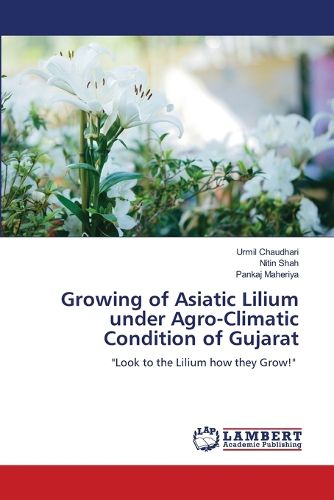Readings Newsletter
Become a Readings Member to make your shopping experience even easier.
Sign in or sign up for free!
You’re not far away from qualifying for FREE standard shipping within Australia
You’ve qualified for FREE standard shipping within Australia
The cart is loading…






This title is printed to order. This book may have been self-published. If so, we cannot guarantee the quality of the content. In the main most books will have gone through the editing process however some may not. We therefore suggest that you be aware of this before ordering this book. If in doubt check either the author or publisher’s details as we are unable to accept any returns unless they are faulty. Please contact us if you have any questions.
Asiatic Lilium is one of the most fascinating ornamentals in appearance, beauty, different forms, and hues of colors, and it is a low-volume, high-value crop. It has been depicted as a symbol of purity and regality. Lilium bulbs have a solid basal plate that produces roots from its bottom and a concentric series of tight-to-loose, fleshy, overlapping scales of varying width from the top. The plants are late spring or summer flowering. Flowers are borne in racemes or umbels at the tip of the stem, with six tepals spreading or deflexed; to give flowers varying from funnel shape to Turks cap. The tepals are free from each other and bear nectar at the base of each flower. Asiatic Lilium thrives well in partial shade during the growth period and it should be cultivated under protected environments. The cultivation of Lilium in net houses can play a better role in improving quality, as well as increasing flowering span and it also reduces the incidence of insect pests as compared to open fields. Asiatic Lilium can be forced in various soil types, but the growing medium must be well-aerated, and possess good water-holding capacity, effective drainage, and a sound physical structure.
$9.00 standard shipping within Australia
FREE standard shipping within Australia for orders over $100.00
Express & International shipping calculated at checkout
This title is printed to order. This book may have been self-published. If so, we cannot guarantee the quality of the content. In the main most books will have gone through the editing process however some may not. We therefore suggest that you be aware of this before ordering this book. If in doubt check either the author or publisher’s details as we are unable to accept any returns unless they are faulty. Please contact us if you have any questions.
Asiatic Lilium is one of the most fascinating ornamentals in appearance, beauty, different forms, and hues of colors, and it is a low-volume, high-value crop. It has been depicted as a symbol of purity and regality. Lilium bulbs have a solid basal plate that produces roots from its bottom and a concentric series of tight-to-loose, fleshy, overlapping scales of varying width from the top. The plants are late spring or summer flowering. Flowers are borne in racemes or umbels at the tip of the stem, with six tepals spreading or deflexed; to give flowers varying from funnel shape to Turks cap. The tepals are free from each other and bear nectar at the base of each flower. Asiatic Lilium thrives well in partial shade during the growth period and it should be cultivated under protected environments. The cultivation of Lilium in net houses can play a better role in improving quality, as well as increasing flowering span and it also reduces the incidence of insect pests as compared to open fields. Asiatic Lilium can be forced in various soil types, but the growing medium must be well-aerated, and possess good water-holding capacity, effective drainage, and a sound physical structure.